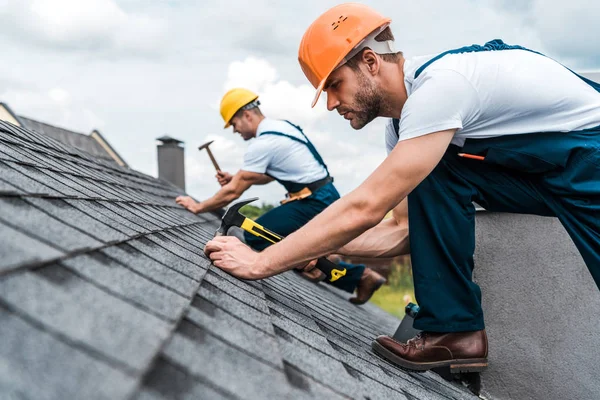6 Major Signs You Need Roof Repair in Portland
Every home owner should have a roofing specialist inspect their roof. It’s best to have this done annually, or at least after any major storm.
Investing in the best roofing materials can save you thousands by preventing extra heating, cooling costs, and potential water damage to your home from a damaged roof. Whether you need repairs or replacement, here are 6 major signs it is time to call roofing contractors in Portland.
1. Shingles Are Missing or Cracked
Shingles are like a layer of armor that protects your home from rain and sun. They are not indestructible, however, and they will eventually wear down over time. If shingles become missing or cracked, it’s time to call for repair.
Isolated cracks are easier to deal with, but widespread cracking is an indication that it’s time to replace your roof. This is the best way to prevent a minor problem from becoming a major leak that can damage your home’s attic and crawl space.
You should also check your gutters for shingle granules that may have washed down. These granules are what give shingles their color and help water slide off the roof.
2. Shingles Are Damaged
Damaged shingles are a major sign that your roof is reaching the end of its lifespan. If the shingle material is starting to break down, it’s likely going to leak and cause water damage in your home.
If you see a lot of shingle granules in your gutters after a storm, it’s a good indicator that your roof sustained severe damage from hail. The granules are what protect the shingle from sun damage, and they’re usually embedded in the surface of your shingles.
You should also look for damage around roof objects like chimneys, vents, and skylights. These areas can leak easily if the flashing is damaged or missing.
3. Light is Coming Through Your Attic
If you’re seeing light coming through the ceilings of your home, this is a sign that it’s time for roof repair. Leaks that are ignored may lead to costly damage and can compromise the structural integrity of your home.
Depending on the age of your roof, you may be able to get away with repairs, but extensive damage could necessitate a replacement. If you’re unsure, consider working with top Portland roofing contractors to see whether your rooftop needs an overhaul or minor repairs. A well-maintained roof should last 15-20 years.
4. Your Home Is Sagging
Your roof is the structure that holds up your entire house. If it begins to sag, you’re facing a major structural issue that should be dealt with immediately by a professional.
This type of problem could indicate that your rafters are being pulled away from the sheathing, and it’s time to have your roof replaced. It’s important to be proactive and have your roof inspected by a professional on a regular basis, especially after harsh winters.
This will help spot problems before they become serious and expensive to fix. It will also prevent a lot of other issues like mold, mildew, and water damage in your home.
5. Water Damage
When water damage is left unattended it can cause serious issues with your roof and home. It can ruin ceilings, walls and flooring coverings as well as wood framing and can even lead to a mold build-up. Mold is detrimental to your health and can ruin furniture, carpeting and personal belongings. It can also be a fire hazard and short out electrical wires.
One of the main signs that you need a roof repair is when you notice water spots on your ceiling. This could be caused by a leak or a lack of ventilation, and it is a sign that it’s time for a roof repair.
6. Mold
Mold can be a major sign of roof leaks and ceiling damage. The mold spores that thrive around leaks and water damage can spread throughout the home and lead to various health complications for you and your family.
Since mold spores float in the air, they can grow in many areas of your house, particularly in those with excess moisture. In addition to fixing the source of moisture, such as a leaky roof or improper attic ventilation, you will also need to clean the affected areas and remove any materials that have been infested with mold. This can be difficult, as mold is often stubborn and requires professional remediation.
